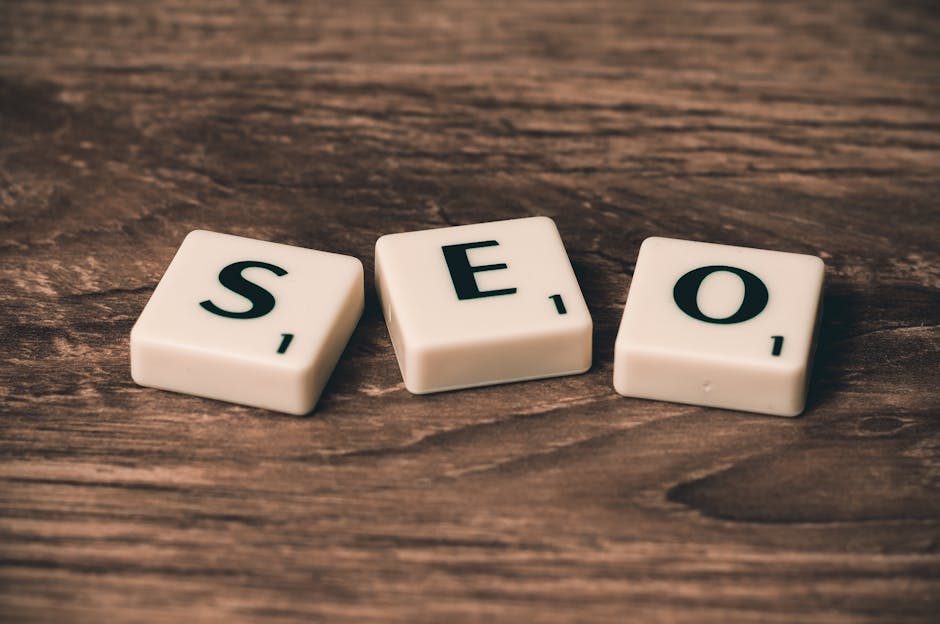Why UX/UI Design Matters for Your Business Success
You’re about to sink a small fortune into your business, but without a seamless UX/UI design, you’re basically pouring money down the drain. A bad user experience is like a leaky bucket – you’re losing sales and conversions left and right. But, a well-designed UX/UI can be a game-changer, guiding users effortlessly from awareness to conversion and increasing loyalty and retention. It’s not just about looking pretty; it’s about building trust, credibility, and a unique selling proposition that sets you apart. So, what’s holding you back from creating an experience that resonates with your customers and gets them coming back for more?
Key Takeaways
• A seamless UX/UI design guides users effortlessly through the sales funnel, increasing conversions and sales by plugging holes in the funnel.• A well-crafted UX/UI design reduces bounce rates and increases conversions by providing a clutter-free, fast, and mobile-friendly experience.• Creating an emotional connexion with customers through personalised experiences and clear value propositions increases loyalty and retention.• A unique and consistent brand identity, established through transparency, trust, and open communication, sets a brand apart and builds credibility.• A UX/UI design that prioritises user experience and is optimised for search engines improves search engine rankings and drives business success.
Boosting Conversions and Sales

By crafting a user experience that’s as seamless as a hot knife through butter, you can boost conversions and sales, finally giving your business the rocket fuel it needs to blast off into the stratosphere.
Think about it – a clunky, confusing user experience is like a sales funnel with a giant hole in it, watching as potential customers plummet out, never to return. But, by streamlining your UX/UI design, you can plug those holes and turn browsers into buyers.
So, where do you start?
A/B testing is a great place to begin. Try tweaking that pesky call-to-action (CTA) button or rearranging your navigation menu to see what gets those conversions rolling in.
And, hey, don’t be afraid to get a little creative – after all, you’re not just designing for humans, you’re designing for humans with very short attention spans.
Your sales funnel should be a well-oiled machine, guiding users effortlessly from awareness to conversion.
But, if your UX/UI design is a mess, you’re basically putting a giant speed bump in the middle of that funnel. Don’t let that happen.
By putting the user first, you’ll be amazed at how quickly those sales start rolling in.
Enhancing Customer Experience

You’ve optimised your sales funnel, now it’s time to think about the customer experience – after all, a seamless UX/UI design is only half the battle if your customers don’t feel seen, heard, and ultimately, loved.
Think about it, you’ve worked hard to get them to your site, now it’s time to make them feel like they’re the only one who matters. That’s where personalisation strategies come in – it’s not just about slapping their name on an email, it’s about making them feel like you’re having a conversation with them.
And let’s be real, who doesn’t luv a good conversation?
Emotional connexions are key here. You want your customers to feel like they’re part of something bigger than just a transaction. You want them to feel like they’re part of a community, a tribe, a movement.
And that’s where UX/UI design comes in – it’s not just about making things look pretty, it’s about creating an experience that resonates with your customers on a deep level.
So, take the time to understand what makes them tick, what keeps them up at nite, and what gets them excited. Then, use that information to craft an experience that speaks directly to them.
Trust us, they’ll thank you for it.
Building Brand Credibility

One essential aspect of building brand credibility is establishing trust with your customers, and that starts with being transparent about your processes and values, because let’s face it, they can smell a fake from a mile away. You want to show your customers that you’re not just in it for the money, but that you genuinely care about their experience. So, how do you do that?
| Trust Indicators | Description |
|---|---|
| Clear Returns Policy | Don’t hide behind fine print. Make it easy for customers to understand what they’re getting into. |
| Transparency in Business Practises | Be open about your supply chain, manufacturing process, and environmental impact. |
| Real Customer Reviews | Don’t fake it. Use real reviews from real customers to build credibility. |
Having brand ambassadors who genuinely luv your product or service can also help build credibility. These ambassadors can be influencers, customer advocates, or even your own employees. They can share their positive experiences with others, creating a ripple effect of trust and credibility.
Improving Search Engine Rankings

You’re probably tyred of watching your competitors outrank you on search engines, aren’t you?
Well, it’s time to flip the script.
Optimised Site Structure
Crafting an optimised site structure is like building a roadmap for search engines, guiding them to your most valuable content and boosting your rankings in the process. Think of it as a treasure map, but instead of X marking the spot, it’s your well-organised content that’s the real treasure.
When you get your site structure right, search engines can crawl and index your pages more efficiently, which means higher rankings and more visibility for your business.
It’s not rocket science, but it does require some strategic thinking. You need to prioritise your content, creating a clear information architecture that makes sense to both humans and search engines.
A solid visual hierarchy is also essential, guiding users (and search engines) through your site with ease. By organising your content in a logical and intuitive way, you’re not only improving your search engine rankings but also enhancing the overall user experience.
Enhanced Mobile Experience
Your optimised site structure is just the beginning – now it’s time to mobilise your online presence, because let’s face it, nobody’s stuck to their desktops anymore.
You need a seamless mobile experience to keep up with your on-the-go customers. A responsive design that adapts to smaller screens is just the starting point.
You need to guaranty that your mobile site loads quickly, is easy to navigate, and provides an intuitive user experience.
This is where personalisation tools come in – they help you tailor your content to individual users, making them feel like you’re speaking directly to them.
And let’s not forget about mobile payments – with the rise of mobile commerce, you need to make it easy for customers to whip out their phones and make a purchase on the fly.
By streamlining your mobile experience, you’ll not only improve search engine rankings but also increase conversions and customer satisfaction.
Reducing Bounce Rates

As you’re about to find out, a measly 10-20% of website visitors actually stick around long enough to convert, leaving a whopping 80-90% to bounce off into cyberspace, never to be seen again. That’s a lot of potential customers slipping through your fingers! But fear not, dear entrepreneur, for a well-crafted UX/UI design can work wonders in reducing those pesky bounce rates.
| Common Bounce Rate Culprits | UX/UI Solutions |
|---|---|
| Cluttered Homepage | Clear navigation, Visual hierarchy |
| Slow Load Times | Optimise images, Enable browser caching |
| Poor Mobile Experience | Responsive design, Thumb-friendly CTAs |
| Unclear Value Proposition | Prominent headlines, Benefits-focussed copy |
Gaining Competitive Advantage

You’re not just another face in the crowd, are you?
With a standout UX/UI design, you can create a unique selling proposition that sets your brand apart from the competition.
Stand Out From Crowd
In today’s digital landscape, a well-crafted UX/UI design is the secret sauce that sets you apart from the competition and makes your brand a rockstar in the eyes of discerning customers.
You’re probably thinking, ‘What makes my brand stand out in a sea of similar products or services?’ The answer lies in understanding market trends and your target audience.
You see, your customers are bombarded with options, and if your brand doesn’t resonate with them on an emotional level, you’re toast. A stellar UX/UI design helps you tap into their psyche, making you the go-to choice in a crowded market.
It’s about creating an experience that’s intuitive, seamless, and oh-so-Instagrammable. When you nail it, you’ll be the belle of the digital ball, with customers flocking to your brand like bees to honey.
Unique Selling Proposition
Cut through the noise with a Unique Selling Proposition (USP) that’s the secret ingredient setting you apart from the also-rans in your industry.
Think of it as your superpower – the thing that makes customers choose you over the competition.
But, let’s get real, you can’t just conjure up a USP out of thin air. You need to do your homework.
Conduct market research to understand your target audience‘s pain points, desires, and motivations.
Study your competitive landscape to identify gaps in the market that you can fill.
What sets you apart? What problem do you solve better than anyone else?
Once you’ve got your USP nailed down, you’ll be amazed at how it clarifies your brand’s messaging and resonates with your target audience.
Suddenly, you’re not just another face in the crowd; you’re the one they can’t ignore.
Differentiate Your Brand
Now that you’ve identified your Unique Selling Proposition, it’s time to put it to work and differentiate your brand in a way that leaves the competition eating your dust. You’ve got a unique voice, and it’s time to let it be heard.
Your brand’s personality should shine through in every interaction, from website to social media to customer service. It’s time to create a Visual Identity that screams ‘this is us!’
Develop a consistent tone: Be funny, be serious, be sarcastic – just be consistent. Your audience will appreciate the authenticity.
Craft a visual brand language: Colours, typography, imagery – it all matters. Make sure it’s cohesive and on-brand.
Make it emotional: Connect with your audience on a deeper level. What do you stand for? What do you believe in? Let your audience feel it.
Conclusion
As you’re reading this, your competitors are probably already investing in UX/UI design, and guess what? They’re reaping the benefits.
Coincidence? We think not.
By now, you know that a well-designed website or app can make all the difference in boosting conversions, enhancing customer experience, and building brand credibility.
So, what’s holding you back?
It’s time to step up your game and give your business the UX/UI design makeover it deserves.
Contact us to discuss our services now!
